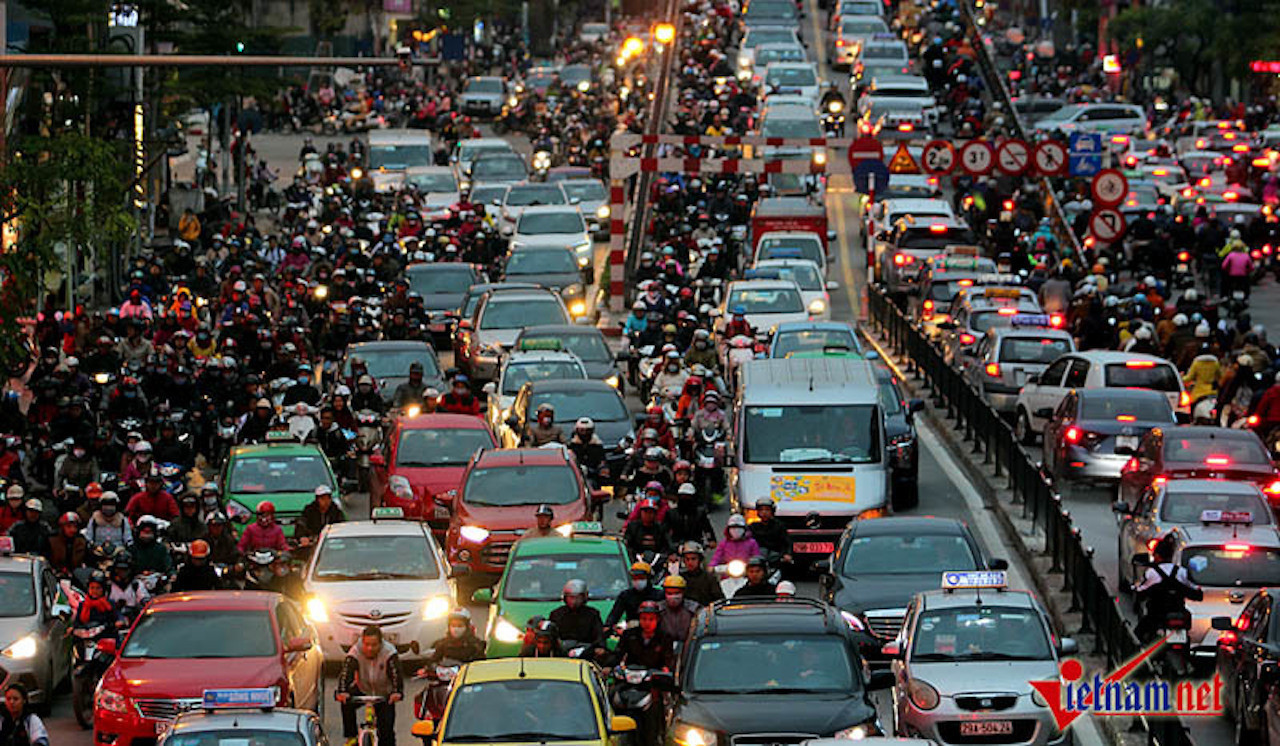Separating lanes for cars and motorbikes is believed to help reduce traffic accidents and congestion. However, experts emphasize that certain road conditions must be met for such a measure to be effective.

In June, Hanoi's Department of Construction plans to implement hard lane separation for cars and motorbikes on major routes such as Pham Van Dong, Vo Chi Cong, and Nhat Tan Bridge.
According to Tran Huu Bao, Deputy Director of the Hanoi Department of Construction, studies indicate that these bridges and roads are not overloaded and have sufficient road width to meet the requirements for dedicated lanes.
Lane separation is expected to improve order, safety, and traffic flow. It also makes lane recognition easier for commuters and helps avoid jostling during rush hours.
"This will be executed as a formal project, carried out methodically," Bao said.
Pham Van Dong Street has a cross-section width of 93 meters, with six lanes on each side. Vo Chi Cong spans 57.5 to 64.5 meters, while Nhat Tan Bridge features a 33.8-meter surface with eight lanes for mixed traffic in both directions.
Field observations show that although these roads are not heavily congested during peak hours, lane encroachment still occurs.
Speaking with VietNamNet, Dr. Phan Le Binh, a traffic expert, stated: "On wide roads with high-speed traffic like Vo Chi Cong, Pham Van Dong, and Nhat Tan Bridge, the mixing of cars and motorbikes is extremely dangerous."
He added that despite continuous lane markings and signage designating right lanes for motorbikes, the absence of physical dividers allows motorcyclists to spill into car lanes when theirs become crowded.
Given that many motorbike riders change lanes abruptly and without checking behind them, mingling with cars poses significant safety risks.
Dr. Binh believes that hard dividers to separate car and motorbike lanes are necessary to enhance traffic safety and reduce accidents.
Should the model be expanded?
Despite the benefits, the question remains: should this lane separation model be applied across all roads in Hanoi?
Dr. Khuong Kim Tao, former Deputy Chief of the Office of the National Traffic Safety Committee, agrees that separating lanes aims to reduce accidents and improve traffic flow. However, he stressed that two conditions must be met.
First, each road direction must have at least three lanes: one for motorbikes and two for cars.
Second, the distance between intersections must not be too short. A 300-500 meter merging zone before intersections is required for lane transitions, with another 200-300 meters needed afterward for traffic to reintegrate.
"In total, you need about 800 meters to 1 kilometer of uninterrupted space. If two intersections are spaced less than a kilometer apart, it's not feasible to separate cars and motorbikes," Tao explained.
Dr. Binh also supports expanding the model but insists it depends on the road’s layout. “On roads without at least two lanes per direction, separation would cause more congestion. Especially where intersections are dense, it’s very difficult to implement due to constant merging,” he noted.
Regarding the growing number of cars occupying road space, Dr. Binh suggested marking painted lanes near the right shoulder for motorbikes on narrow roads.
“We only need 1.5 to 2 motorbike lanes, not necessarily the full 3-meter width. Cars should only enter these lanes when turning right. Those going straight or turning left must not use them. Violators should be penalized. If enforced, this could gradually shape better traffic habits,” Dr. Binh concluded.
N. Huyen